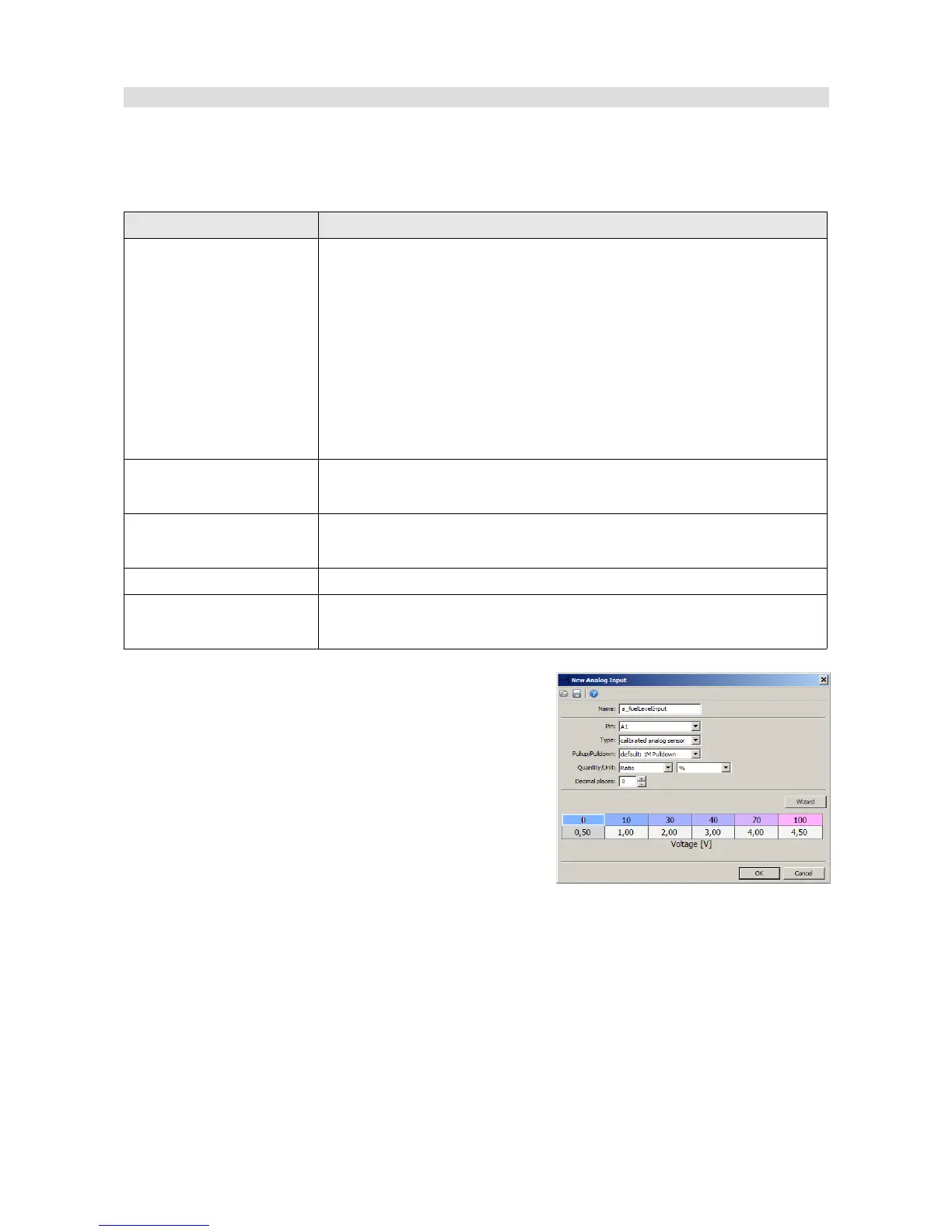Fuel level filter
The Fuel level filter function is used for filtering the signal from the fuel level sensor in the fuel
tank.
The value produced by this function is output to the ecu.fuelLevel. channel.
Parameter Description
Fuel level mode One fuel level sensor – use one fuel level sensor, the result is stored
in ecu.fuelLevel channel,
Two fuel level sensors (average) – use two fuel level sensors, the
result is avarage value of both sensors, and it is stored in
ecu.fuelLevel channel,
Two fuel level sensors (separate levels) – use two fuel level
sensors, and results are stored in ecu.fuelLevel and ecu.fuelLevel2
channel
Fuel level 1 -
Source channel
A channel/variable determining the amount of fuel in the tank.
Usually, a 2D table with calibration is used for this purpose.
Fuel level 2 -
Source channel
A channel/variable determining the amount of fuel in the tank.
Usually, a 2D table with calibration is used for this purpose.
Maximum step change The maximum allowed fuel level change during one second.
Filter time The time based on which samples are to be averaged. The longer the
time, the greater the filtering.
In a typical car the fuel level sensor is a potentiometer that
requires an additional pullup resistor (these are usually
small values ranging between 100 and 200 Ohms).
Connect this signal to an analogue input and select
Calibrated analog sensor. This will allow you to calibrate
the amount of fuel for a given voltage in the table.
If you need to resize the table, right click on the table cells
and select Modify Bins/Insert cell (to add a cell) or
Modify Bins/ Delete cell (do delete a cell).
Then enter the name of your channel (a_fuelLevelInput) in the Source field. After filtering, the
value is available in the ecu.fuelLevel channel.
Page 90/137
